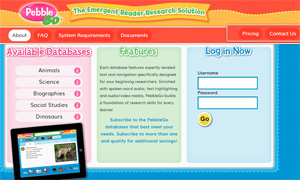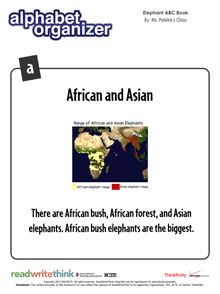 Digital tools open up powerful possibilities for informing teacher instruction and enhancing student learning. It takes time and thought to integrate traditional teaching methods with technology. Teachers need to consider their objectives and goals, seek tools that will improve understanding, and decide how best to incorporate them. In working with younger students, I have found three digital practices particularly worthwhile to use: researching with online sources that read text to the student, using online resources that provide classroom materials and multimedia experiences, and sharing opportunities that go beyond the classroom.
Digital tools open up powerful possibilities for informing teacher instruction and enhancing student learning. It takes time and thought to integrate traditional teaching methods with technology. Teachers need to consider their objectives and goals, seek tools that will improve understanding, and decide how best to incorporate them. In working with younger students, I have found three digital practices particularly worthwhile to use: researching with online sources that read text to the student, using online resources that provide classroom materials and multimedia experiences, and sharing opportunities that go beyond the classroom.
There are countless ways technology can be integrated into any and all areas of study. For example, my first graders examined elephants in a three-week, mid-year interdisciplinary unit. I included digital tools for research, resources, and sharing to enrich inquiry, literacy, and content area learning. Prior to this endeavor, my students already had experience with accessing, navigating, and reading online sources.
Online research and resources
To acquire background knowledge, the students researched elephants on an online site that could be read aloud to them. They used PebbleGo, which provided text, map, video, and audio resources intended for young students. First graders are typically capable of understanding information at a level that is higher than their independent reading level. Digital tools like this assist students in gaining knowledge because they can listen instead of reading independently. Students also have the benefit of being able to use this feature at their own pace. Using this tool was an effective addition to my typical way of introducing topics, exploring new vocabulary, and preparing students for independent reading.
Because I needed more reading materials for my students, I created a class set of guided reading books using Raz-Kids, which provides printable resources on a variety of subjects. I selected two books on elephants that contained similar content but were at different reading levels. Because I was assembling them, the website also offered me some flexibility regarding the content. I was able to take out a page about elephant poaching that was not appropriate for my students and construct the book without it.
Throughout our study of elephants, students viewed videos I had found online, helping them to gather facts, understand concepts, as well as thoughtfully analyze and synthesize their ideas with classmates. Students grasped why an elephant’s trunk is so strong after observing the inside of it and seeing the rings of muscles. My first graders more deeply appreciated elephant families through the captivating real-life story of a patient mother helping her baby, who was born with bent legs, learn how to walk. While watching a video of a mother elephant instructing her baby on how to move a rock, my students used what they had previously learned to keenly analyze the actions of the elephants.
Online sharing
My students were eager to share what they were learning, and online resources made it easier to communicate this with their families. We used Alphabet Organizer from ReadWriteThink to create an ABC book as a culminating project. Students created pictures using Pixie creativity software and wrote the accompanying text. Their book was stored and saved so it could be completed over the course of a few days before sending it out to their families.
 In the end, technology offers a number of advantages to classroom learning. Technology makes it possible for young students to more easily acquire knowledge at their comprehension level, rather than their reading level. Online sites provide multimedia materials that are both engaging and substantive. Students are better able to understand concepts and share their work through the use of these platforms. Although effectively digitizing curricula takes time, practice, resources, professional development, technical assistance, and the freedom to make mistakes, the outcomes are valuable and meaningful for students, teachers, and families.
In the end, technology offers a number of advantages to classroom learning. Technology makes it possible for young students to more easily acquire knowledge at their comprehension level, rather than their reading level. Online sites provide multimedia materials that are both engaging and substantive. Students are better able to understand concepts and share their work through the use of these platforms. Although effectively digitizing curricula takes time, practice, resources, professional development, technical assistance, and the freedom to make mistakes, the outcomes are valuable and meaningful for students, teachers, and families.
 Karen Pelekis is a first grade teacher at Greenacres Elementary School in Scarsdale, NY. This article is part of a series from the Technology in Literacy Education Special Interest Group (TILE-SIG).
Karen Pelekis is a first grade teacher at Greenacres Elementary School in Scarsdale, NY. This article is part of a series from the Technology in Literacy Education Special Interest Group (TILE-SIG).